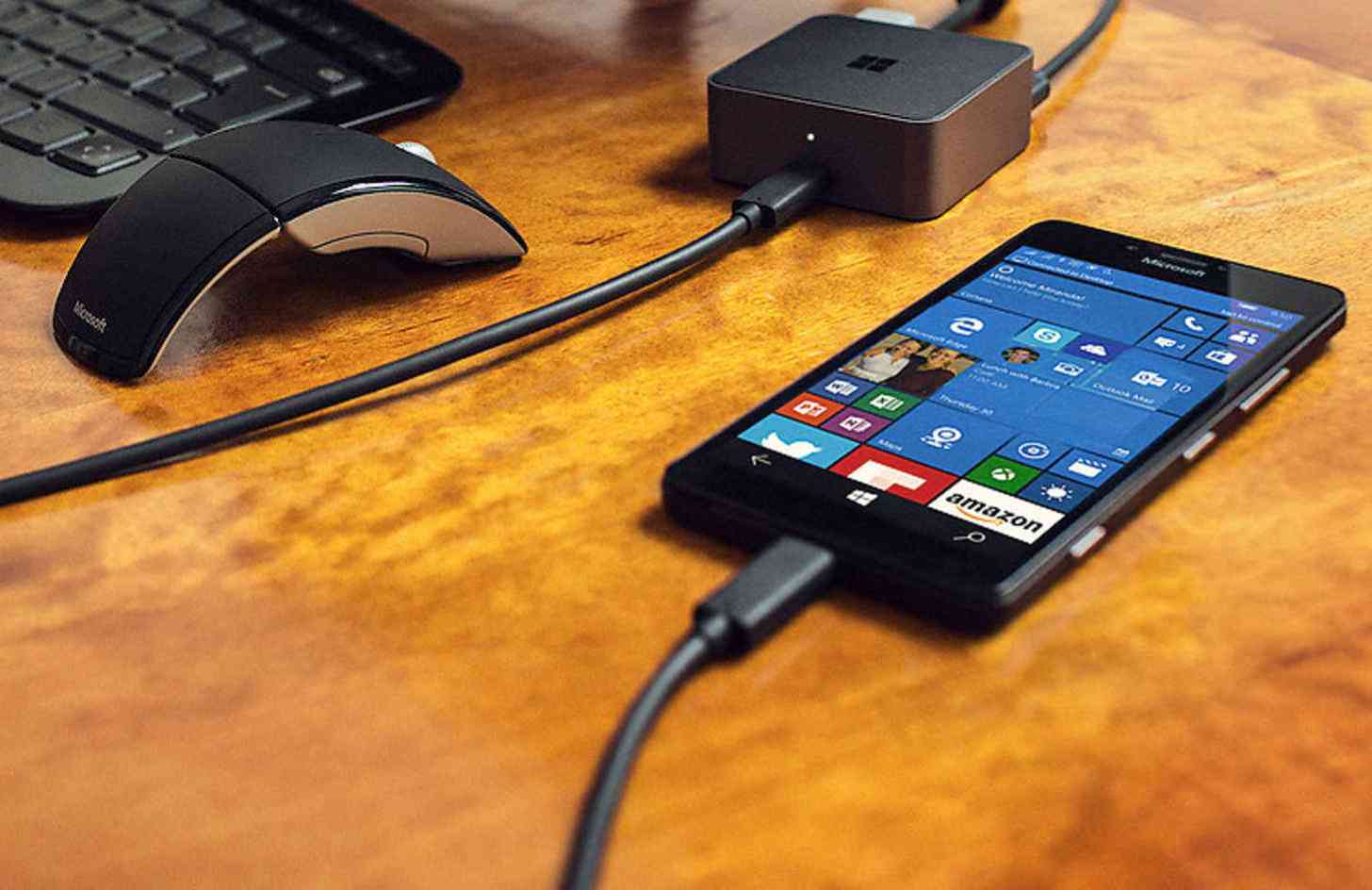
It has been a long wait for Windows Phone fans when it comes to new flagships, but Microsoft ended that wait today with the unveiling of two new flagships that will hopefully be the start of a new, bright future for, what is now known as, Windows 10 Mobile.
Like many flagships these days, leaks and rumors beat the official announcement to the punch; there isn’t much surprise to what is offered in the newly official Lumia 950 and 950 XL devices, but that’s not necessarily a bad thing. Overall, the phones look like they were worth the wait and they don’t seem to take away from that traditional Lumia look.
For official information’s sake, let’s take a look at what the Lumia 950 and 950 XL have to offer in terms of specs.
The Lumia 950 features a 5.2-inch 2560 x 1440 AMOLED display. It boasts a Qualcomm Snapdragon 808 hexa-core processor and runs on a 3000 mAh battery. The Lumia 950 XL features a 5.7-inch 2560 x 1440 AMOLED display, uses a Qualcomm Snapdragon 810 octa-core processor, and has a slightly larger 3340 mAh battery. The screen size, processors, and battery size are the only three differentiating factors between them.
As for the rest, both flagships offer 3GB of RAM, 32GB of internal storage (with up to 2TB of additional available via microSD – an amount that isn’t available yet, but is worth mentioning for future-proofing), 5-megapixel front-facing cameras, and 20-megapixel Pureview cameras on the back. Both phones use USB Type-C charging, and both also support Qi wireless charging.
Both phones also support the Windows Hello and Continuum features, as well as the infrared iris scanner. Windows Hello, which is available on PCs using the Windows 10 operating system, can be used to recognize your face or fingerprint (in devices with fingerprint sensors) in order to unlock a device. Continuum is the feature that allows you to plug your phone into the Display Dock accessory, and essentially turns your phone into a working PC.
So what makes the Lumias different than other flagships? Aside from Windows Hello and Continuum, there are a couple of other notable features on each device as well.
The first you’re probably wondering about, given the reputation that flagship Lumias have had in the past, is how well the camera works. While we don’t have any official shootout photos to compare yet, we do know that the Lumia pairs each have 3 LED flashes rather than the typical 2, which Microsoft claims will help with red eye and discoloration in photos. It was also said that the cameras work very well under low light conditions.
The other interesting feature that the Lumias tout would be liquid cooling technology, which will (hopefully) help aid the overheating issues known to happen in devices using the same Snapdragon 810 processor in the Lumia 950 XL. Sounds cool in theory, but we’ll have to wait and see how well it works.
The Lumias themselves seem like great additions to Windows Phone, or Windows 10 Mobile. It’s been far too long since we’ve seen a Windows Phone flagship, so it’s exciting to see a couple of new ones.
As for how well it will do, especially compared to the competition, it’s hard to say. I’m not sure people will pick up on Continuum right away, or if the stigma surrounding Windows Phone for the past several years will manage to drop off. The infamous app gap has without question discredited Windows Phone as a truly viable platform, but there’s still hope that this will change sooner rather than later. Not only have Google and Microsoft made amends recently regarding patent lawsuits, but Facebook also announced that they would be reworking the Facebook and Messer apps on Windows 10 devices, as well as officially adding an Instagram app (an app that has been in beta forever now).
I think it will take time for the mobile side of Windows 10 devices to pick up, but I think it has a real shot at becoming something.